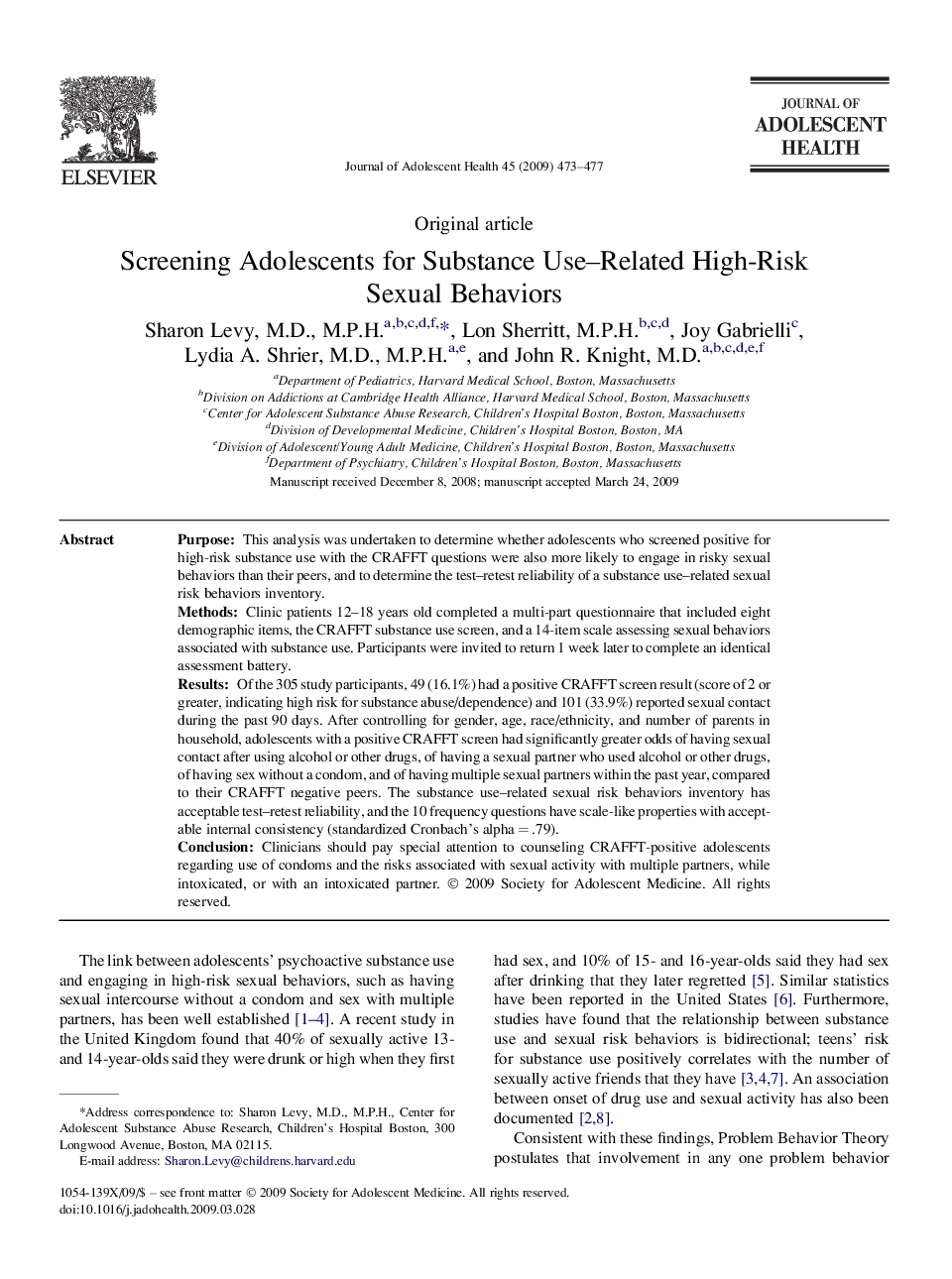| Article ID | Journal | Published Year | Pages | File Type |
|---|---|---|---|---|
| 1079363 | Journal of Adolescent Health | 2009 | 5 Pages |
PurposeThis analysis was undertaken to determine whether adolescents who screened positive for high-risk substance use with the CRAFFT questions were also more likely to engage in risky sexual behaviors than their peers, and to determine the test–retest reliability of a substance use–related sexual risk behaviors inventory.MethodsClinic patients 12–18 years old completed a multi-part questionnaire that included eight demographic items, the CRAFFT substance use screen, and a 14-item scale assessing sexual behaviors associated with substance use. Participants were invited to return 1 week later to complete an identical assessment battery.ResultsOf the 305 study participants, 49 (16.1%) had a positive CRAFFT screen result (score of 2 or greater, indicating high risk for substance abuse/dependence) and 101 (33.9%) reported sexual contact during the past 90 days. After controlling for gender, age, race/ethnicity, and number of parents in household, adolescents with a positive CRAFFT screen had significantly greater odds of having sexual contact after using alcohol or other drugs, of having a sexual partner who used alcohol or other drugs, of having sex without a condom, and of having multiple sexual partners within the past year, compared to their CRAFFT negative peers. The substance use–related sexual risk behaviors inventory has acceptable test–retest reliability, and the 10 frequency questions have scale-like properties with acceptable internal consistency (standardized Cronbach's alpha = .79).ConclusionClinicians should pay special attention to counseling CRAFFT-positive adolescents regarding use of condoms and the risks associated with sexual activity with multiple partners, while intoxicated, or with an intoxicated partner.
